
Paul Charles Morphy was an American chess player. Living before chess had a formal world championship, he was widely acknowledged to be the greatest chess master of his era. He won the tournament of the First American Chess Congress of 1857, winning matches with each opponent by lopsided margins. He then traveled to England and France to challenge the leading players of Europe. He played formal and informal matches with most of the leading English and French players, and others including Adolf Anderssen of Germany, again winning all matches by large margins. He then returned to the United States, and before long abandoned competitive chess. A chess prodigy, he was called "The Pride and Sorrow of Chess" because he had a brilliant chess career but retired from the game while still young. Commentators agree that he was far ahead of his time as a chess player, though there is disagreement on how his play, and his natural talent, rank compared to modern players.

Howard Staunton was an English chess master who is generally regarded as the world's strongest player from 1843 to 1851, largely as a result of his 1843 victory over Pierre Charles Fournier de Saint-Amant. He promoted a chess set of clearly distinguishable pieces of standardised shape – the Staunton pattern promulgated by Nathaniel Cooke – that is still the style required for competitions. He was the principal organiser of the first international chess tournament in 1851, which made England the world's leading chess centre and caused Adolf Anderssen to be recognised as the world's strongest player.
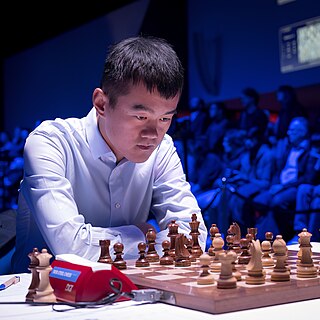
The World Chess Championship is played to determine the world champion in chess. The current world champion is Ding Liren, who defeated his opponent Ian Nepomniachtchi in the 2023 World Chess Championship. Magnus Carlsen, the previous world champion, declined to defend his title.

Karl Ernst Adolf Anderssen was a German chess master. He won the great international tournaments of 1851 and 1862, but lost matches to Paul Morphy in 1858, and to Wilhelm Steinitz in 1866. Accordingly, he is generally regarded as having been the world's leading chess player from 1851 to 1858, and leading active player from 1862 to 1866, although the title of World Chess Champion did not yet exist.
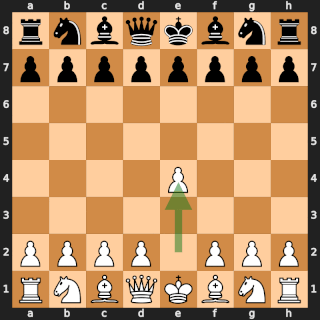
The Opera Game was an 1858 chess game, played at an opera house in Paris. The American master Paul Morphy played against two strong amateurs: the German noble Karl II, Duke of Brunswick, and the French aristocrat Comte Isouard de Vauvenargues. It was played as a consultation game, with Duke Karl and Count Isouard jointly deciding each move for the black pieces, while Morphy controlled the white pieces by himself. The game was played in a box while an opera was performed on stage. Morphy quickly checkmated his opponents following rapid development of material, involving a queen sacrifice.

Charles Henry Stanley was the first chess champion of the United States. When the first U.S. championship match took place in 1845, Stanley defeated Eugène Rousseau of New Orleans, and claimed the title of U.S. Chess Champion.
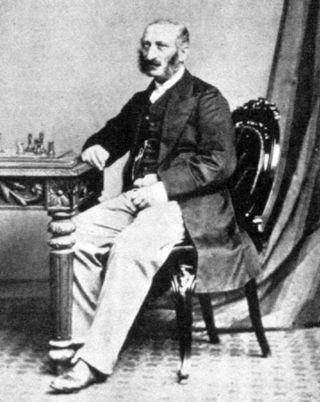
Johann Jacob Löwenthal was a professional chess master. He was among the top 3 players of the 1850s.
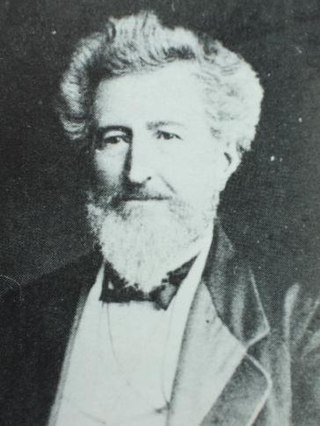
Pierre Charles Fournier de Saint-Amant was a leading French chess master and an editor of the chess periodical Le Palamède. He is best known for losing a match against Howard Staunton in 1843 that is often considered to have been an unofficial match for the World Chess Championship.

Thomas Wilson Barnes (1825–1874) was an English chess master, one of the leading British masters of his time.
Leonard William Barden is an English chess master, writer, broadcaster, journalist, organizer and promoter. The son of a dustman, he was educated at Whitgift School, South Croydon, and Balliol College, Oxford, where he read modern history. He learned to play chess at age 13 while in a school shelter during a World War II German air raid. Within a few years he became one of the country's leading juniors. He represented England in four Chess Olympiads. Barden played a major role in the rise of English chess from the 1970s. He is a chess columnist for various newspapers. His column in London's Evening Standard is the world's longest-running daily chess column by the same author.
The Bishop's Opening is a chess opening that begins with the moves:
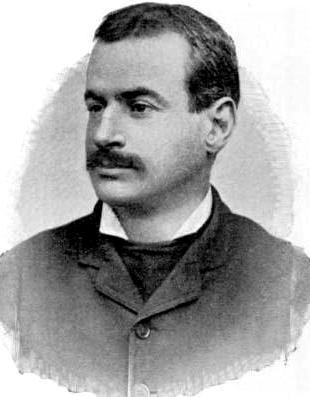
James Mason was an Irish-born British-American chess player, journalist and writer who became one of the world's best half-dozen players in the 1880s. Mason was ranked the number 1 player in the world by Chessmetrics during 11 separate months between August 1877 and June 1878.

Rainer Fritz Albert Knaak is a German chess player who holds the FIDE title of Grandmaster (GM).
Frederick Horace Deacon was a British chess master. He is mainly notable for spurious claims to have drawn against Paul Morphy, making himself both notorious and unpopular.
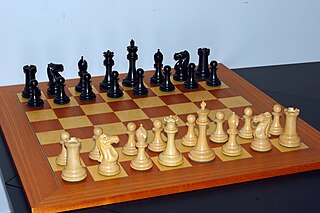
In chess, the player who moves first is called White and the player who moves second is called Black. Their pieces are the white pieces and the black pieces. The pieces are often not literally white and black, but some other colors, usually a light color and a dark color. The 64 squares of the chessboard, which is colored in a checkered pattern, are likewise the "white squares" or "light squares", and "black squares" or "dark squares"; they are usually of contrasting light and dark color rather than literally white and black. For example, the squares on vinyl boards may be off-white ("buff") and green, while those on wood boards are often light brown and dark brown.
white: 1. There are 16 light-colored pieces and 32 squares called white. 2. When capitalized, the word refers to the player of the white pieces.
The Staunton–Morphy controversy concerns the failure of negotiations in 1858 for a chess match between Howard Staunton and Paul Morphy and later interpretations of the actions of the two players. The details of the events are not universally agreed, and accounts and interpretations often show strong national bias.
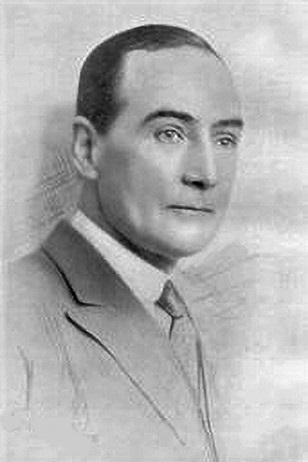
Philip Walsingham Sergeant was a British professional writer on chess and popular historical subjects. He collaborated on the fifth (1933), sixth (1939), and seventh (1946) editions of Modern Chess Openings, an important reference work on the chess openings. He also wrote biographical game collections of Paul Morphy, Rudolf Charousek, and Harry Nelson Pillsbury, and other important books such as A Century of British Chess (1934) and Championship Chess (1938).

In chess, several checkmate patterns occur frequently enough to have acquired specific names in chess commentary. By definition, a checkmate pattern is a recognizable/particular/studied arrangements of pieces that delivers checkmate. The diagrams that follow show these checkmates with White checkmating Black.
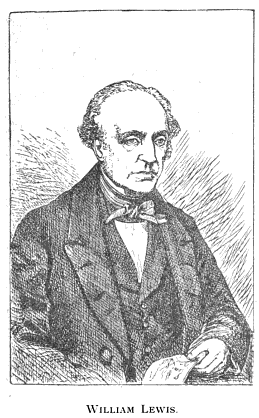
William Lewis (1787–1870) was an English chess player and author, nowadays best known for the Lewis Countergambit. He may have been the first player ever described as a Grandmaster of the game.
In chess, an economical mate is a checkmate position such that all of the attacker's remaining knights, bishops, rooks and queens contribute to the mating attack. The attacker's king and pawns may also contribute to the mate, but their assistance is not required, nor does it disqualify the position from being an economical mate. Economical mates are of interest to chess problem composers for their aesthetic value. In real gameplay, their occurrence is incidental. Nevertheless, some notable games have concluded with an economical mate such as the Opera game, won by Paul Morphy.















